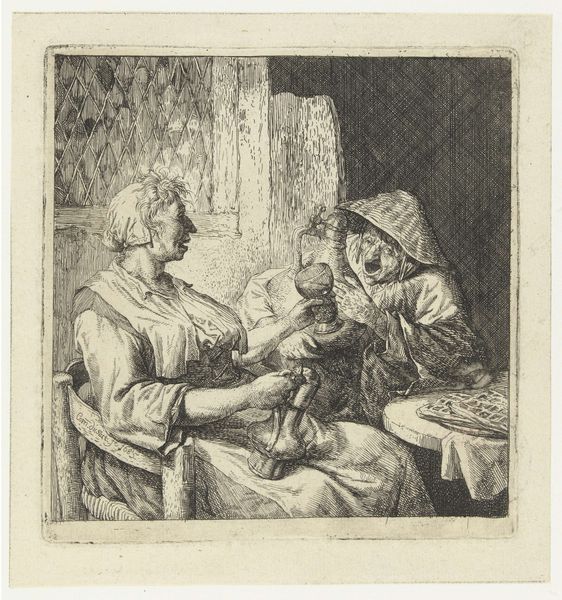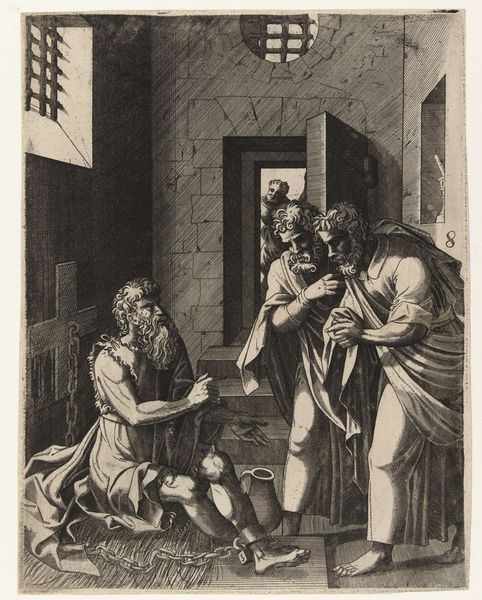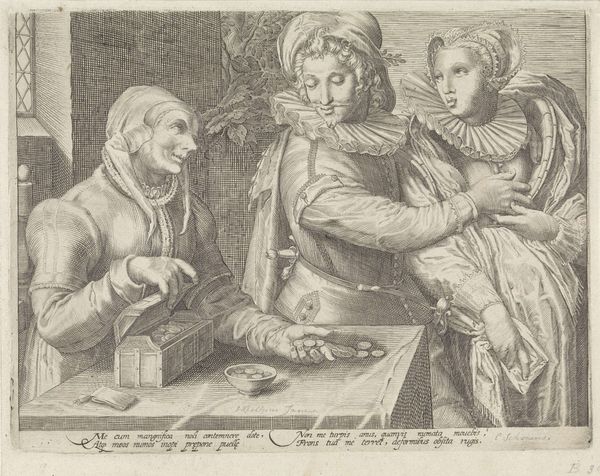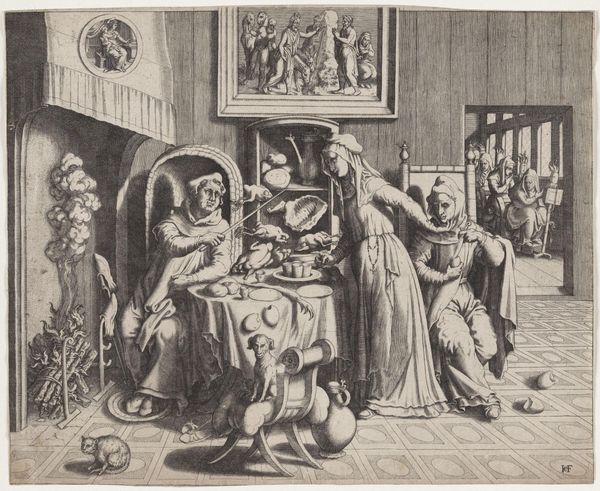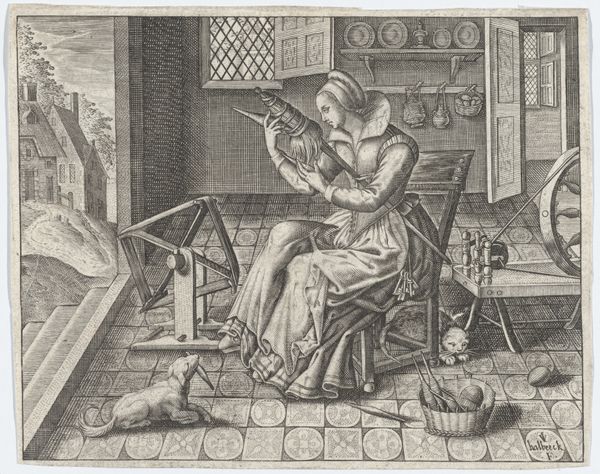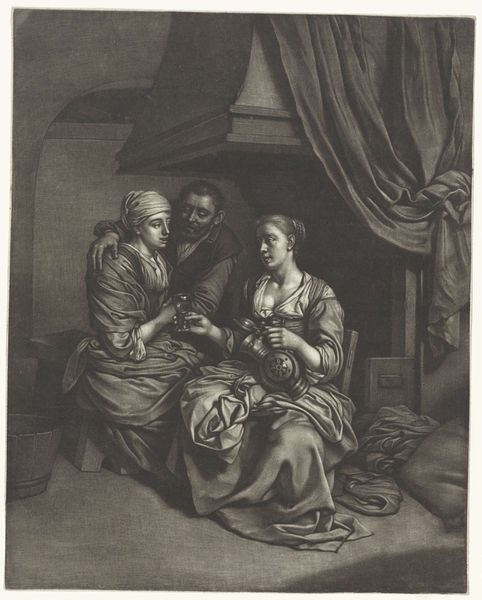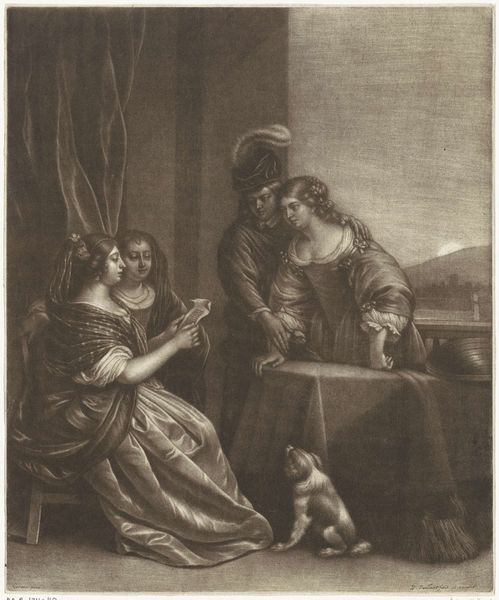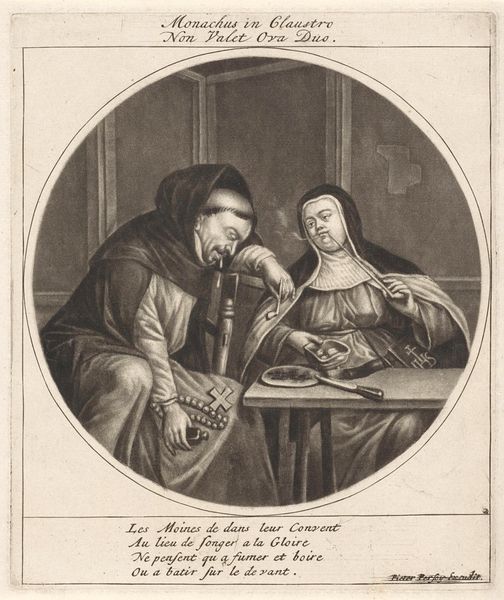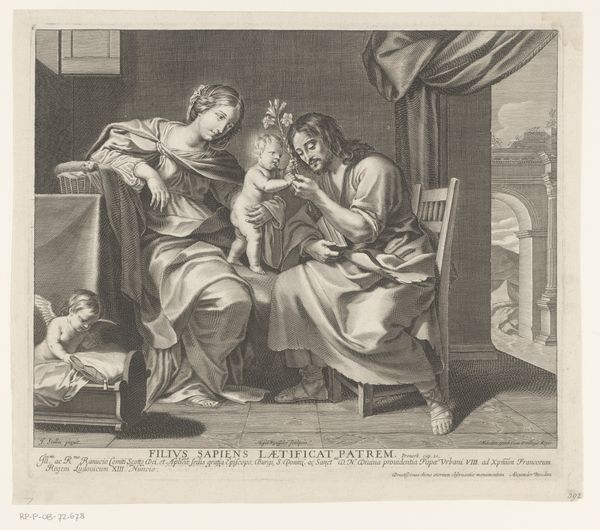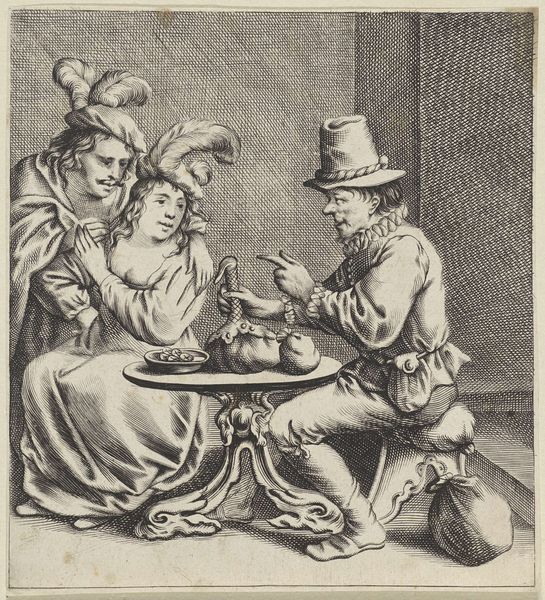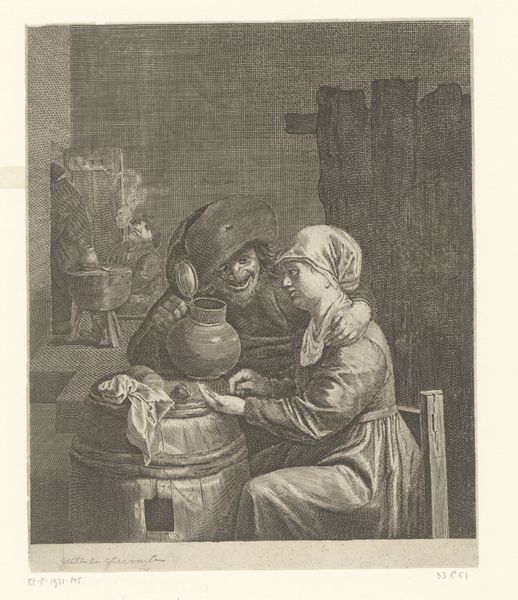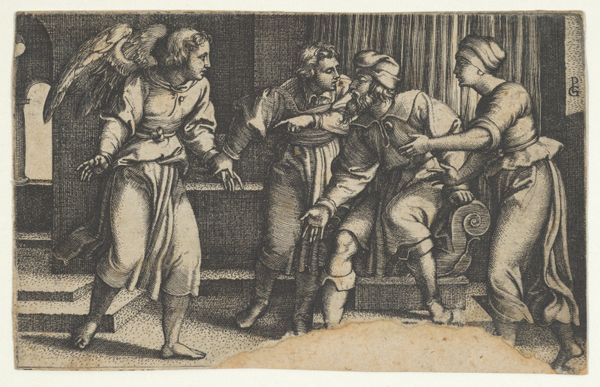
Two Sculptors at Night in Rome. Double Portrait of Francois Duquesnoy and Georg Petel 1620 - 1623
0:00
0:00
painting, oil-paint, canvas
#
baroque
#
painting
#
oil-paint
#
canvas
#
genre-painting
#
history-painting
#
portrait character photography
Dimensions: 130.1 cm (height) x 111.4 cm (width) x 7.8 cm (depth) (Brutto), 114 cm (height) x 95 cm (width) (Netto)
Editor: So, this is Adam de Coster's "Two Sculptors at Night in Rome," made with oil paint on canvas around 1620. It's pretty striking, the way the light catches those faces. How do you interpret this work? Curator: Well, consider the shared light source. It’s a symbol, isn’t it? The candle illuminates not only their physical work but also their shared intellectual pursuit, the spark of artistic inspiration they’re passing between them. Notice how they seem suspended in darkness, their faces almost masks revealed by the light. Editor: Masks? What do you mean? Curator: They present themselves in Rome. The candle casts shadows as a metaphor for their creative collaboration and competitive nature. Look closely, the artist uses the light to make us examine a moment where one shares work, one gives attention, to the forms of each creation. In essence the work depicts two people using the tools and talent to present to each other what it means to have symbolic representation. Editor: So, it’s about ambition? About presenting symbolic forms of ambition through each face, their talent, and how they use light in a collaborative effort? Curator: In part, perhaps. Think about Rome then. It was, and remains, a nexus point of shared culture in Western art that these young men partake within a shared dialogue. To capture that moment is an insight. Consider how light is used in other pieces of the time. Does that enhance your feeling and vision? Editor: It definitely gives me something new to look for when trying to understanding painting from the Baroque. The artist makes me reflect about these moments when the culture of Rome reflects off the artistic light shared in collaborative representation. Curator: Exactly. It allows us to contemplate on the artists creating new iconic representations.
Comments
statensmuseumforkunst almost 2 years ago
⋮
We assume that we are seeing François Duquesnoy (left) and Georg Petel because the works of art depicted can be identified as theirs. But it is hardly possible to tell the two artists apart. A single flame is the only source of illumination. One asks oneself what this double portrait is all about? What is being portrayed? In spite of the atmosphere of intimacy the artists stare right ahead of themselves without seeing each other. Their gazes are directed inwards in contemplation. The light accentuates their thoughtful faces as well as their hands, tools, and works of art. Thus, the painting can be read as addressing the conditions necessary for the creation of art: contemplation (inspiration), hands and tools (craftsmanship), and the light itself, understood here as the wellspring of art and as a metaphor for inspiration. Petel's and Duquesnoy's contemplative gazes cross above the source of light. It is here that they, being artists, "touch" each other. This inspiration is what they share and portray here.
Join the conversation
Join millions of artists and users on Artera today and experience the ultimate creative platform.
